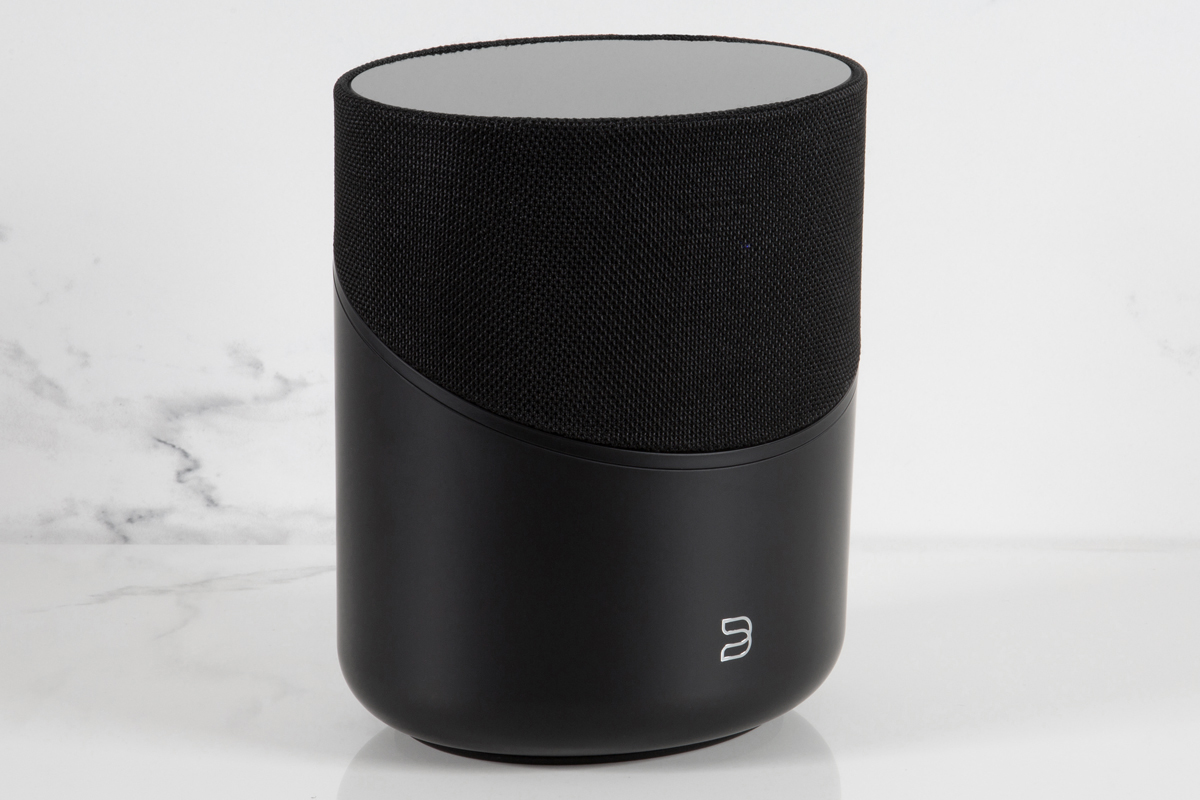Every hobby has its killjoys—and audio has more than its share. I’m thinking of purists who insist that there’s only one right way to listen to reproduced music: with your head locked in the sweet spot between a pair of speakers. Members of this party’s fanatical wing may have other bugaboos, too. DSP—not allowed! Lossy compression—intolerable! Listen through a Bluetooth speaker out on the patio? Anathema! Listen through a smart speaker while you prepare dinner? Sacrilege!
Of course, the best way to listen is sitting in the sweet spot between a great pair of speakers fed by equally great upstream components. But that doesn’t mean other ways of enjoying music are wrong. There are many times when we’d like to enjoy music away from the sweet spot—waking up in the morning, relaxing in the afternoon, preparing dinner, winding down for the day—and there are scads of single-piece music systems that let you do just that.
One such component is the Bluesound Pulse M streaming tabletop music system ($399, all prices in USD), which has a very distinguished pedigree. Bluesound’s parent company, Lenbrook Industries, also owns NAD Electronics and PSB Speakers. This compact, elegant-looking system can be used almost anywhere you want music—on a bedside table, bookshelf, or kitchen counter.
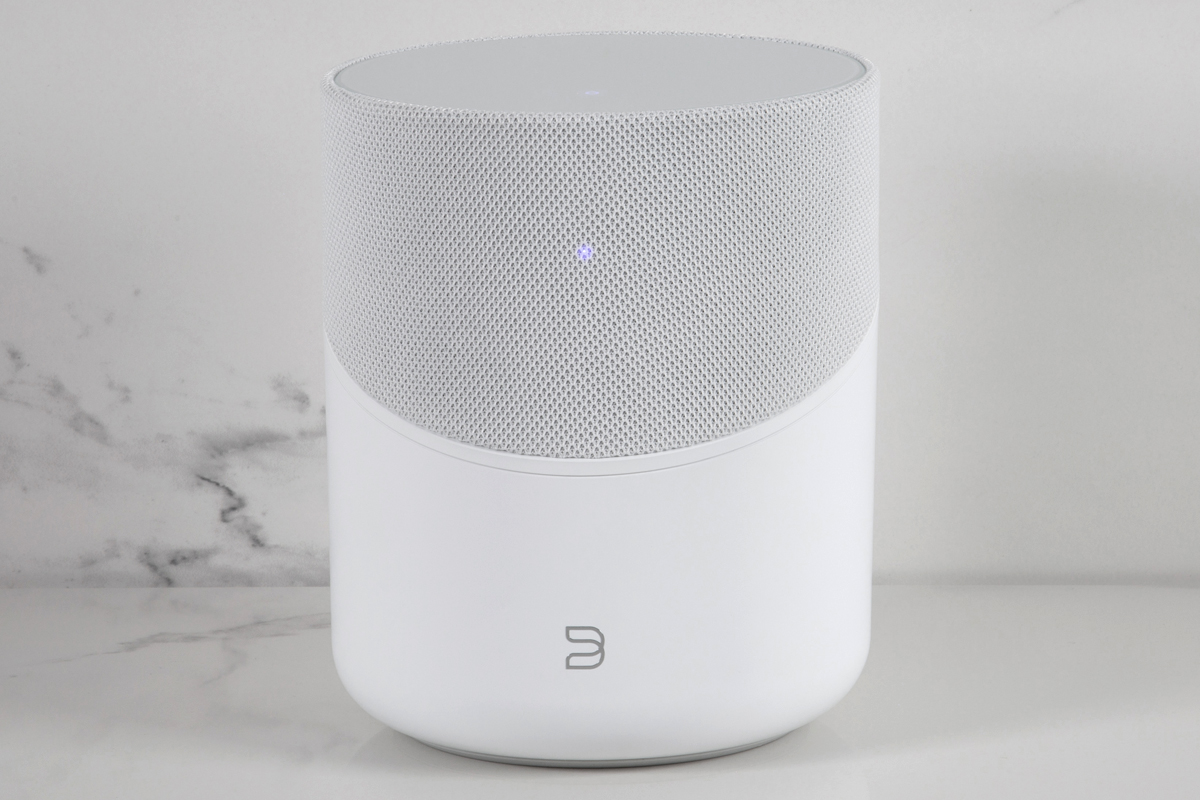
Like all Bluesound products, the Pulse M has Bluetooth, ethernet, and Wi-Fi connectivity, and a network streamer based on Lenbrook’s acclaimed BluOS software platform. Using the BluOS Controller app, which is available for Android, iOS, macOS, and Windows, you can cue up music from more than 20 streaming services, including several that offer lossless and hi-rez music. You can also play music from an external drive connected to the Pulse M’s USB port, stream via Bluetooth, or play music from a component such as a disc player connected to the speaker’s combined mini-optical/3.5mm input.
One Pulse M can be used on its own or paired with a second Pulse M for true stereo playback. And you can combine two Pulse Ms with a Bluesound Pulse Soundbar+ ($999) and Sub+ subwoofer ($749) for 4.1-channel surround sound. The Pulse M can be part of a whole-home music system with as many as 64 zones, if everything is connected by ethernet, or 16 zones, if you’re using Wi-Fi.
Description
Viewed from above, the Pulse M has an elliptical shape. It’s available in matte white or matte black finishes, measures 6.7″W × 8″H × 5.9″D, and weighs 5.6 pounds. The bottom part of the enclosure is plastic; the upper part is covered in a permanently attached cloth grille that extends lower on the front than on the back.
Behind that grille are two 0.75″ tweeters, each powered by a 15W amplifier, offset from each other by 45 degrees. At the bottom of the enclosure is an upfiring 5.25″ woofer powered by a 50W amp. Bluesound says the Pulse M’s “Omni-Hybrid” driver arrangement enables it to produce “clear, lush audio at nearly every listening angle.” Specified frequency response is 60Hz–20kHz, ±1.5dB.
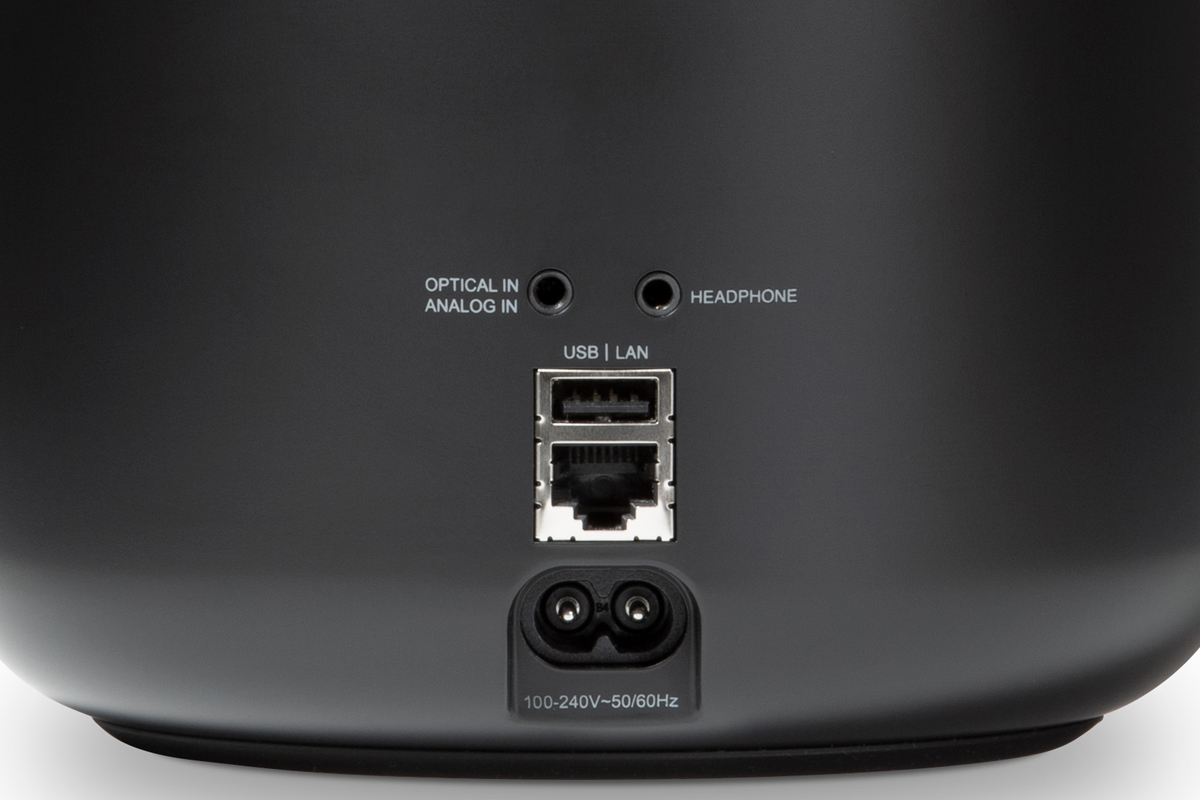
Around back are a USB Type-A port for connecting an external drive loaded with music files, combined 3.5mm/mini TosLink input, 3.5mm headphone output jack, ethernet port, and two-prong power inlet.
The top panel has a proximity sensor. Move your hand near the speaker, and you’ll see illuminated touch controls that let you adjust volume, skip tracks, pause and resume playback, and select a playlist or internet radio station that you’ve programmed using the BluOS app. This is a welcome feature because it lets listeners perform basic operations without having to fire up an app.
Bluesound offers some useful accessories for the Pulse M: the WM230 swiveling wall mount ($79 each) and FS230 floor stand ($149 each). The floor stand has a wiring channel, and is adjustable in height from 24.8″ to 43.6″.
Software and setup
One of the big attractions of the Pulse M is the rich, robust BluOS platform, which last fall received a major facelift. In previous versions of BluOS, the Home, Library, and Players menus were each in separate stacks that opened like drawers sliding out from a dresser. BluOS 4.0 has a more conventional interface, with icons at the bottom of the screen for the main menus.
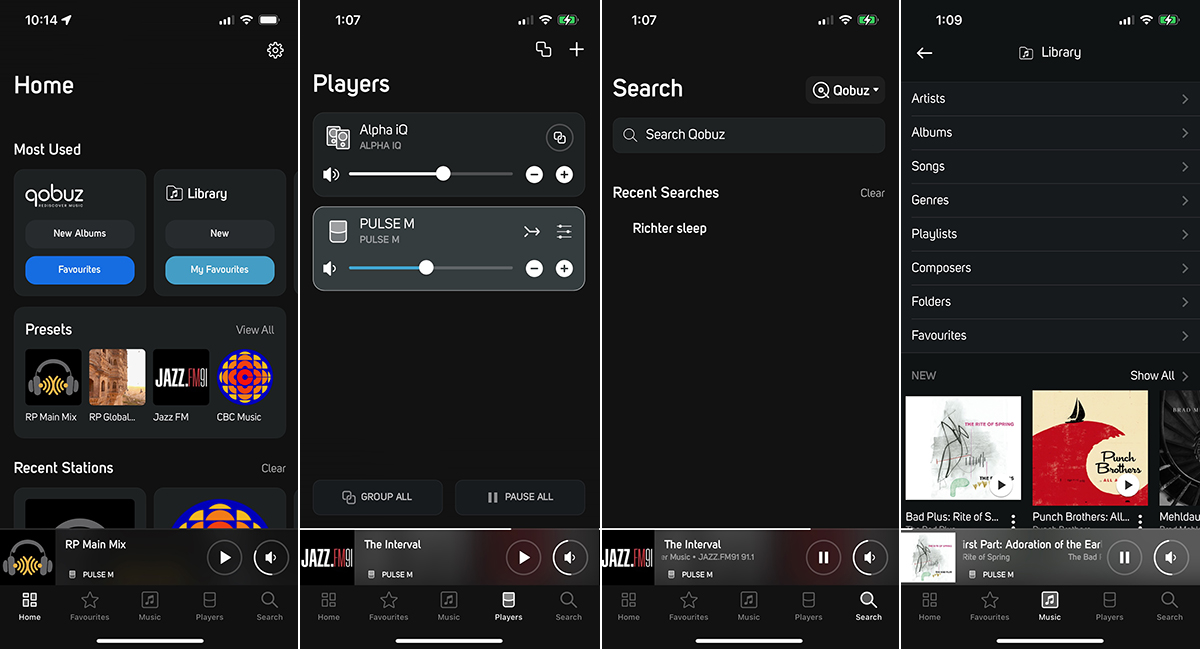
The Search function now has a drop-down menu that lets you specify which streaming service (or local music library) to search, for faster, more tailored results. A new Favorites menu offers quicker access to your favorite content. Another new feature is the ability to play music stored on a USB drive connected to a BluOS-enabled component through other BluOS components on your home network. I have a Samsung 256GB SSD loaded with music files connected to the PSB Alpha iQ active speaker system I use for desktop audio in my home office. I was able to play these files through the Pulse M.
If you already have BluOS-enabled components on your home network, you can add the Pulse M to your BluOS setup by tapping the + icon in the Players menu of the BluOS app. The app will find the Pulse M, invite you to designate the room where it’s being used, and upload your network information to the speaker. If this is your first BluOS component, you’ll have to download and install the BluOS Controller app on a smart device or personal computer. When you launch the app, it will find your BluOS components and guide you through the setup process. Setup is straightforward, but if you need guidance, you can find it on the BluOS support site.
The next step is adding music services to the BluOS app. It’s easy—tap the Music icon at the bottom of the screen, then in the Music menu tap the + icon in the top-right corner to add a service. You’ll see a list of all the services supported by BluOS. Choose the one(s) you want, and in the screens that follow, enter your username and password for each service.
Like all current Bluesound products, the Pulse M supports Apple AirPlay 2, so you can stream audio to the speaker directly from any app on an iOS device or Mac. It also supports Spotify Connect and Tidal Connect, so you can cue up music in the apps for those services and then transfer playback to the Pulse M. Additionally, the Pulse M is Roon Ready.
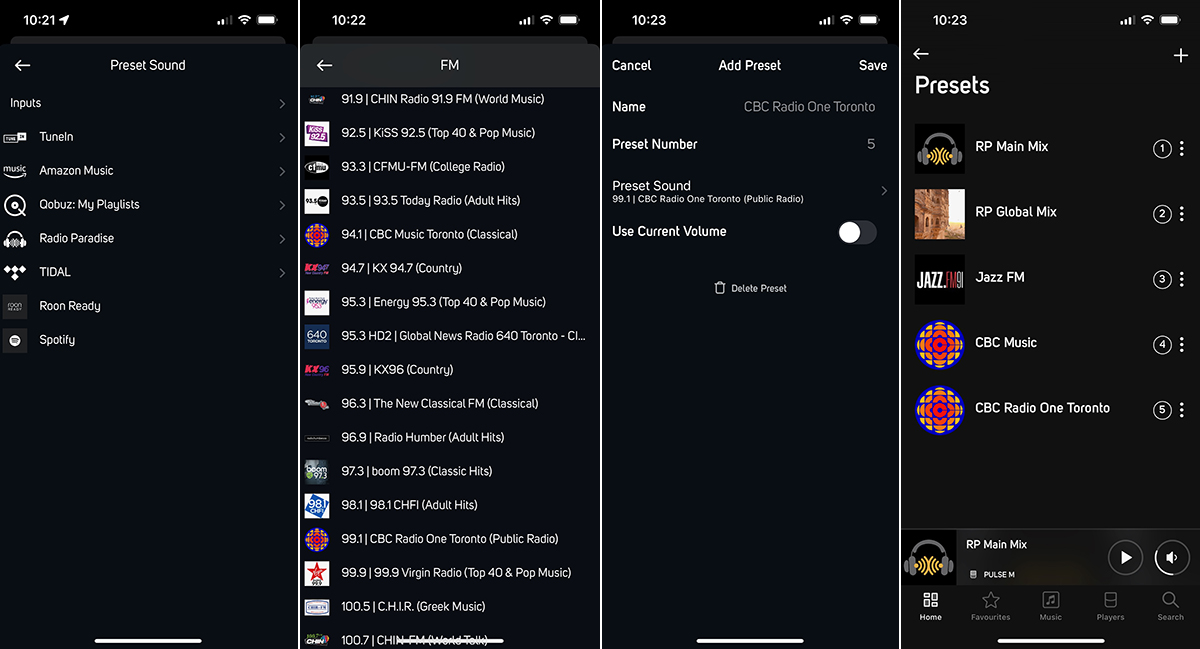
There are a few sections of the BluOS app that will be of special interest to Pulse M owners. To program the Pulse M’s preset buttons, tap on View All in the Preset menu in the Home screen, and in the next screen tap the + icon. The Add Preset screen will invite you to enter a name for the preset and confirm the preset number. To program the preset, tap the arrow beside Preset Sound. In the next menu, you’ll see a list of services that you’ve enabled in BluOS. Choose the service you want, and navigate to the web radio station or playlist you want to assign to that preset. I used this function to create five presets. BluOS offers five Radio Paradise channels in lossless CD-quality and MQA versions. I assigned the MQA streams of RP Main Mix and RP Global Mix to Presets 1 and 2. For Presets 3 through 5, I selected TuneIn Radio streams of three Toronto FM stations.
The Pulse M has an alarm function that will let you wake up to music—just like a traditional clock radio. To set an alarm, enter the Settings menu by clicking the gear icon in the Home screen, choose Alarms, then click the + icon in the Alarms screen. That will take you to the Alarm Settings screen where you specify alarm time and alarm sound. By default, the sound will be music in your playback queue or whatever else you were last listening to; you can choose other options from the Preset menu. You can also set different alarms for different days of the week.
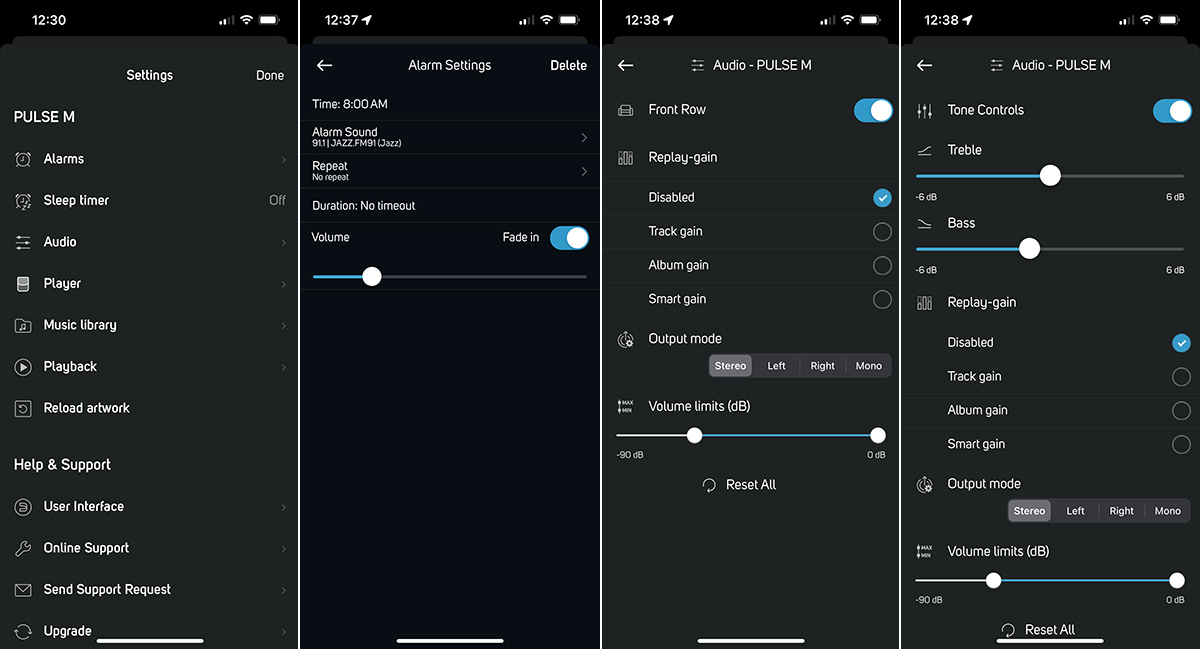
It’s also worth checking out the Audio Settings menu. There you can adjust bass and treble, enable Replay gain (so that volume levels are more consistent), and choose Output mode (Stereo, Left, Right, Mono)—this is how you can set combined Pulse Ms for stereo operation. An option I particularly liked is Front Row audio, which is described this way on the BluOS support site:
When Front Row is enabled, the Player’s audio profile undergoes modifications through a blend of DSP settings and EQ adjustments. Generally, you can expect to perceive enhanced richness in the lower frequencies (<60Hz) and a greater sense of openness and expansiveness in the higher frequencies (>5kHz). Additionally, you may notice heightened prominence in the dialog region, which is typically characterized by a slight boost at around 3kHz, resembling the experience of sitting in the front row of a live music performance. These EQ enhancements are most pronounced when listening at lower to moderate volume levels.
A day in the life
For most of the review period, the Pulse M sat on a bedside table in the master bedroom of my Toronto home. My missus and I listened to it when we got up in the morning and before we retired for the night. I also did some daytime listening in my home office, then moved the Pulse M to the kitchen and played music while I prepared dinner.
Our bedroom isn’t very large, so the Pulse M and the table it sat on were right in a corner. In the kitchen, the only convenient place for the Pulse M was in a corner of the countertop. In both locations, the corner placement reinforced the Pulse M’s low-frequency output, which made bass a bit muddy. Setting the bass control in the BluOS app to -2dB made the low frequencies smoother.
I wanted to try the Front Row option, even though it disables the Pulse M’s tone controls. I preferred the sound with the Front Row feature engaged; it was richer and livelier. Without Front Row, the Pulse M sounded more muffled and closed-in. So I left this feature on through most of my listening.
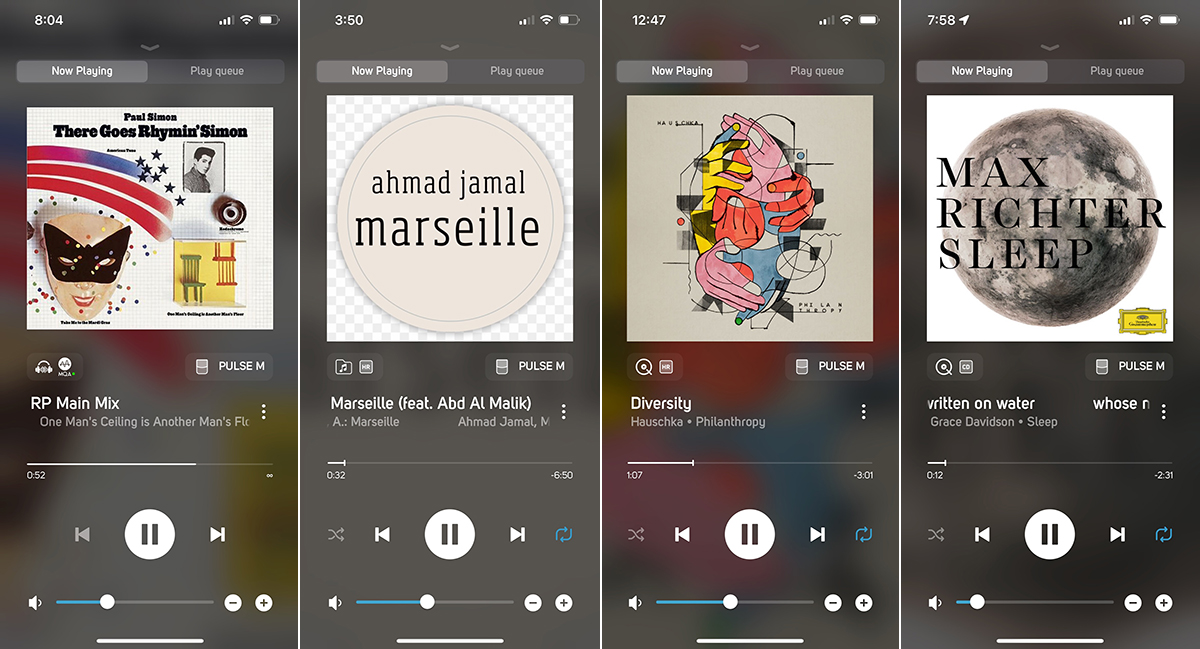
In the BluOS app I had already set an alarm for 8:00 a.m. and selected a TuneIn Radio stream of a Toronto jazz radio station, CJRT-FM, as the wake-up sound. So at 8:00 sharp, I heard CJRT’s station announcement, and then “Jive at Five” by Ray Bryant began playing. The tom tom beat that opens the song sounded big and bold—a promising beginning. I enjoyed the fat, woody sound of the double bass, but the attacks were just a bit soft. So were the strokes on the snare drum and wood block later in the song. Bryant’s bouncy piano playing sounded lovely throughout. All told, this high-energy number was a great way to start the day, even though the presentation was a bit closed-in. That wasn’t a big surprise. This was an old mono recording from 1958, and CJRT’s stream is heavily compressed—128kbps MP3.
So I hit the Preset 1 control on the Pulse M’s top panel to switch to Radio Paradise’s Main Mix in MQA, then tapped the track-forward control until I heard a familiar song. It was Paul Simon’s “One Man’s Ceiling Is Another Man’s Floor” from There Goes Rhymin’ Simon. David Hood’s bass guitar sounded big and powerful and Roger Hawkins’s drums sounded snappy and energetic, but his cymbal strikes had a bit too much sizzle. The sound of Barry Beckett’s barrelhouse piano was glorious, and Simon’s voice was completely convincing.
That was more like it. Before heading downstairs to put on the coffee, I opened the BluOS app on my iPhone and changed the alarm sound to RP’s Main Mix. That way, I could wake up to better sound the next morning.
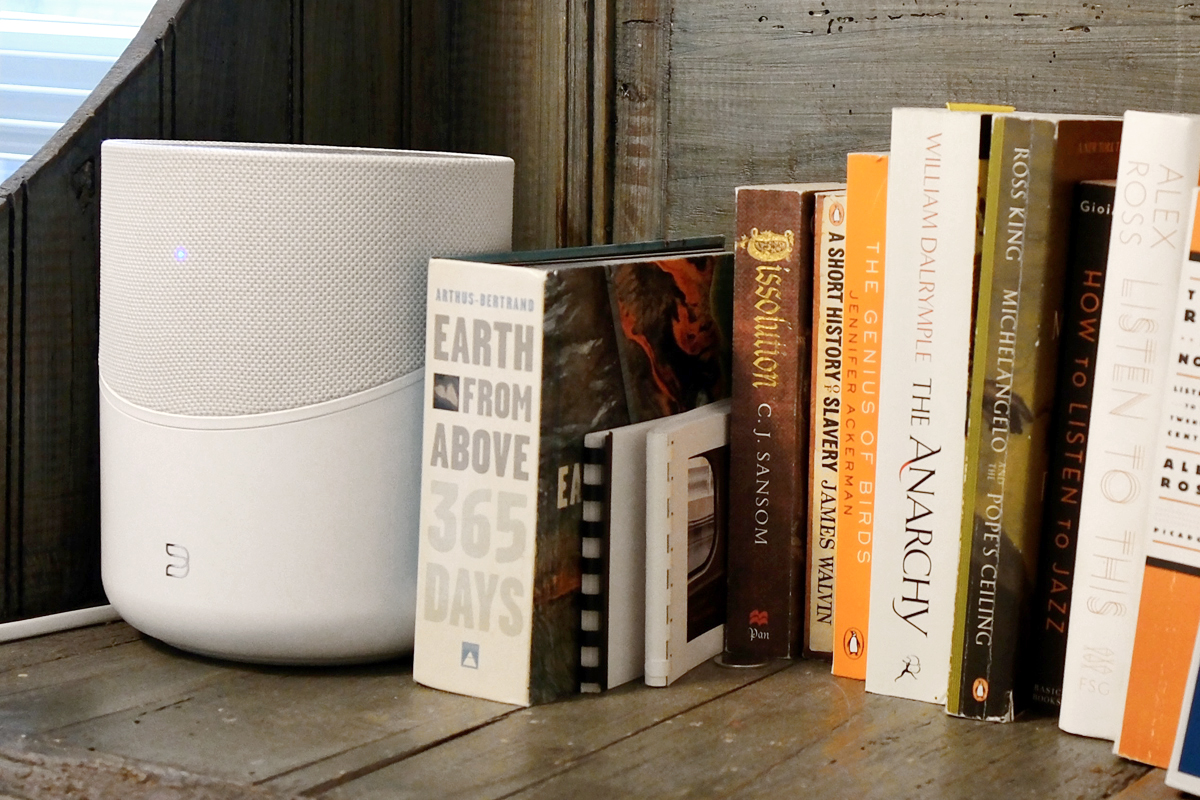
For a mid-afternoon break, I placed the Pulse M on a hutch in my home office and plunked myself on a convertible sofa against the opposite wall, 6′ from the speaker, and then streamed some favorite albums from the SSD connected to the PSB Alpha iQ. One of them was Marseille, a love letter to France’s second-largest city by Ahmad Jamal (24-bit/96kHz FLAC, Jazz Village / ProStudioMasters).
There are three versions of the title song on the album. The first is an instrumental number that opens with a rat-a-tat snare riff accompanying Jamal’s piano playing. Through the Pulse M, Herlin Riley’s snare drum had wonderful texture. Piano tone was accurate, and Jamal’s touch was beautifully rendered. James Cammack’s double bass sounded full and robust, with impressive snap on notes played on the higher strings. However, his lower notes sounded a bit thuddy.
On the second version, rapper Abd Al Malik’s spoken narration sounded excellent. Aside from slightly hot sibilants, I heard no colorations in his voice at all. I had the same reaction to Mina Agossi’s soprano vocals in the third version. I’m not fluent in French, but both vocal tracks were reproduced with such clarity that I was able to follow the lyrics and translate on the fly. The chimes and bells played by percussionist Manolo Badrena had delicious metallic clarity.
Of course, the single Pulse M didn’t produce a real stereo image, though it did create a sense of spaciousness. And it could play loudly enough to fill my small office with no sign of distress. When I got off my sofa and moved around the room, timbres remained consistent.
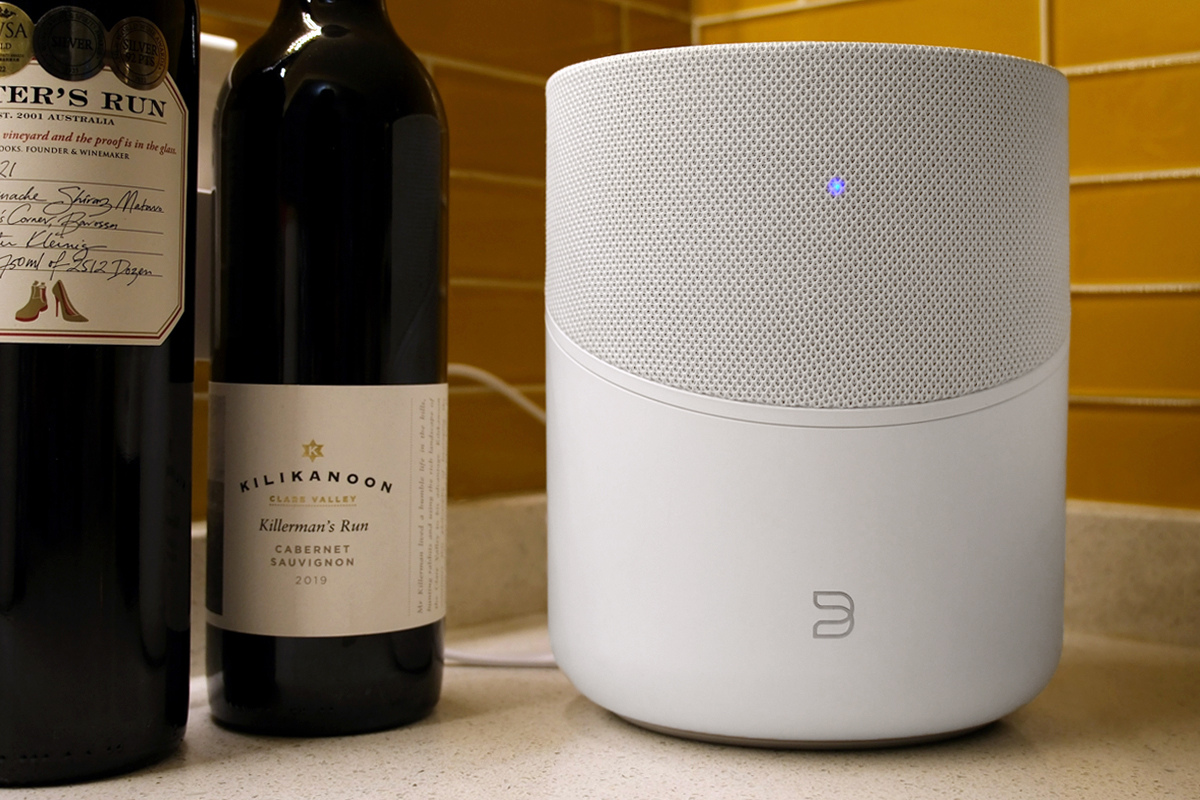
The next stop was a corner of my kitchen counter. Wanting something up-tempo while I prepared dinner, I cued up Philanthropy, the latest album by the German keyboardist-composer Volker Bertelmann, a.k.a. Hauschka (24/48 FLAC, City Slang / Qobuz). On “Diversity,” the high-energy opening track, the hard-driving deep synth notes pounded impressively, but were a bit thuddy and indistinct. Deactivating Front Row and setting bass to -2dB made the bass smoother. However, with Front Row engaged, the higher synth notes playing the main tune and the prepared piano tinkling out the harmony sounded livelier, with faster leading edges. The sharp percussive effects later in the song were beautifully crisp. These elements sounded more muffled and closed-in when I turned Front Row off so that I could use the tone controls.
My next musical example is as out-there as it gets, but it shows how a lifestyle component like the Pulse M can provide musical experiences that are unattainable with a conventional stereo rig. Just before my missus and I turned in for the night, I returned the Pulse M to its place on my bedside table and cued up Sleep by the English composer Max Richter (24/96 FLAC, Deutsche Grammophon / Qobuz). Eight hours and 23 minutes in duration, this composition is meant to be played through the night, while the listener sleeps.
The opening section, “Dream 1 (before the wind blows it all away),” is a gentle melody on electronic keyboard underpinned by deep synth notes. Those synth notes provided a hypnotic foundation to the music, but they also had an indistinct droning quality. Otherwise, the sound was lovely, and that’s what we fell asleep to.
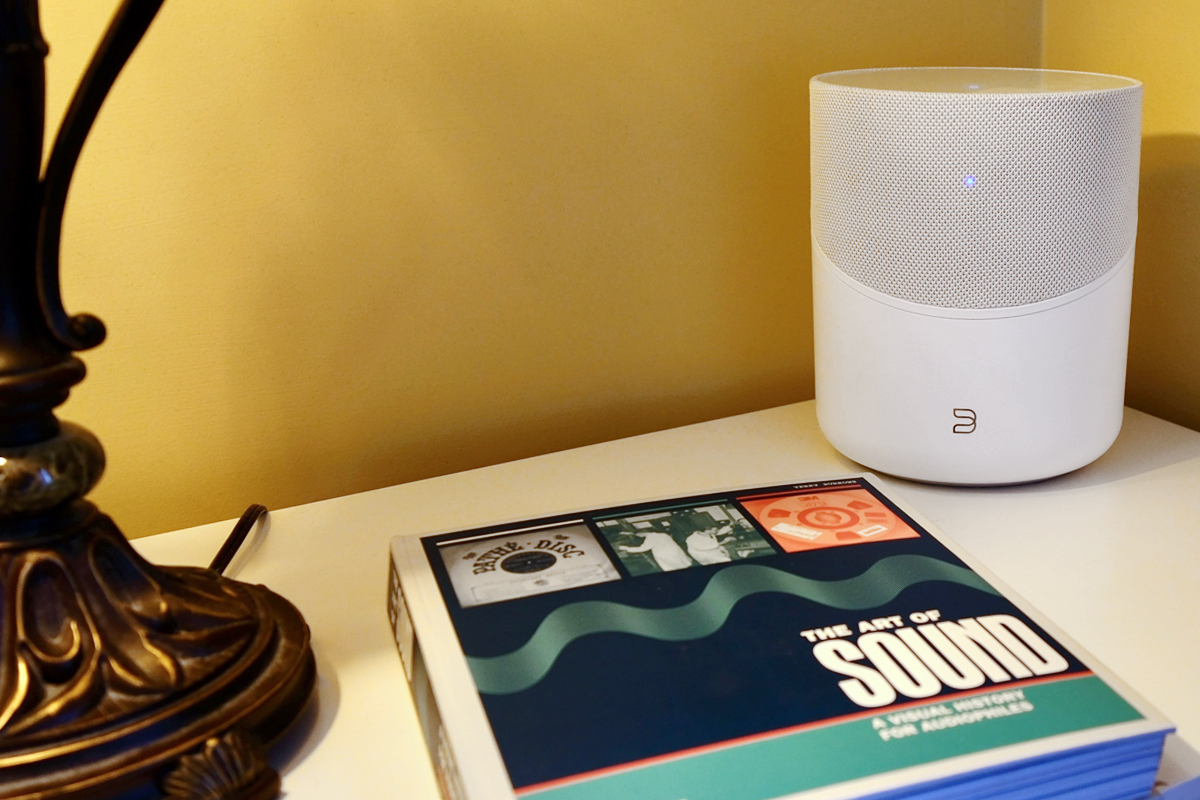
I woke up a couple of times during the night with Sleep still playing. On “whose name is written on water,” soprano Grace Davidson sings wordlessly above electronic effects. Her voice soared beautifully, and sounded utterly natural. Davidson also sings wordlessly on “Path 3 (7676),” this time accompanied by Richter on pipe organ. The theme played on high notes on the organ sounded pristine, but the pedal notes again had a droning quality. On “moth-like stars,” a string quintet plays the main theme above Richter’s repeated keyboard notes. The sound was a touch hollow, but otherwise lovely—especially the cellos, which sounded rich and woody.
Early in the morning, before the alarm went off, I woke up to Davidson’s wordless singing, Richter’s synth notes, and the string quintet playing “Dream 0 (till break of day).” It was sublime.
Then at 8:00 a.m., cued by the alarm I had programmed, the Pulse M abruptly switched to a Radio Paradise stream of “Short Change Hero” by The Heavy from their 2009 album The House That Dirt Built. The track begins with thunderstorm effects, jangling electric guitar, and pounding timpani, followed by dirge-like wordless voices. Just past the one-minute mark, lead vocalist Kelvin Swaby enters, accompanied by drums, guitars, and bass guitar—and the song takes off. As before, those pounding bass notes sounded kind of thuddy, but otherwise I really enjoyed what the Pulse M did with this hard-rocking track.
But what a contrast with Sleep! Time to go downstairs and put on the coffee.
Comparison
I didn’t have another single-piece music system on hand to use as a comparison, but I did have my PSB Alpha iQ streaming active loudspeaker system ($1299) on the top shelf of my secretary desk. Listening to Marseille through the PSB system from my office chair 3.5′ away from the speakers, right in the sweet spot, I got a real stereo image. But there were other differences. Bass was deeper and better controlled through the Alpha iQ system, with none of the thudiness in the tom tom and double bass I heard on the Pulse M. Cymbals weren’t splashy. Predictably, the image collapsed when I moved to the couch and continued listening to the Alpha iQ system. While I was now about 40 degrees off axis, the Alpha iQ still sounded more refined than the Pulse M. Compared to the PSB system, the Pulse M sounded a bit hollow and everything was more mushed together. Nonetheless, the Pulse M had a beguiling liveliness that made me want to keep listening. Keep in mind that the Alpha iQ costs more than three times as much as the Pulse M, and it’s a true stereo system. All things considered, the Pulse M fared very well in this comparison.
Conclusion
I found a lot to like about the Bluesound Pulse M. It packs a lot of performance into an attractive, small package. It’s easy to set up and use. The underlying BluOS software platform is rich and robust. It supports other protocols, including AirPlay 2, Spotify Connect, and Tidal Connect, adding to its flexibility. And I really appreciated those illuminated top-panel controls, which make it easier to perform fast adjustments.
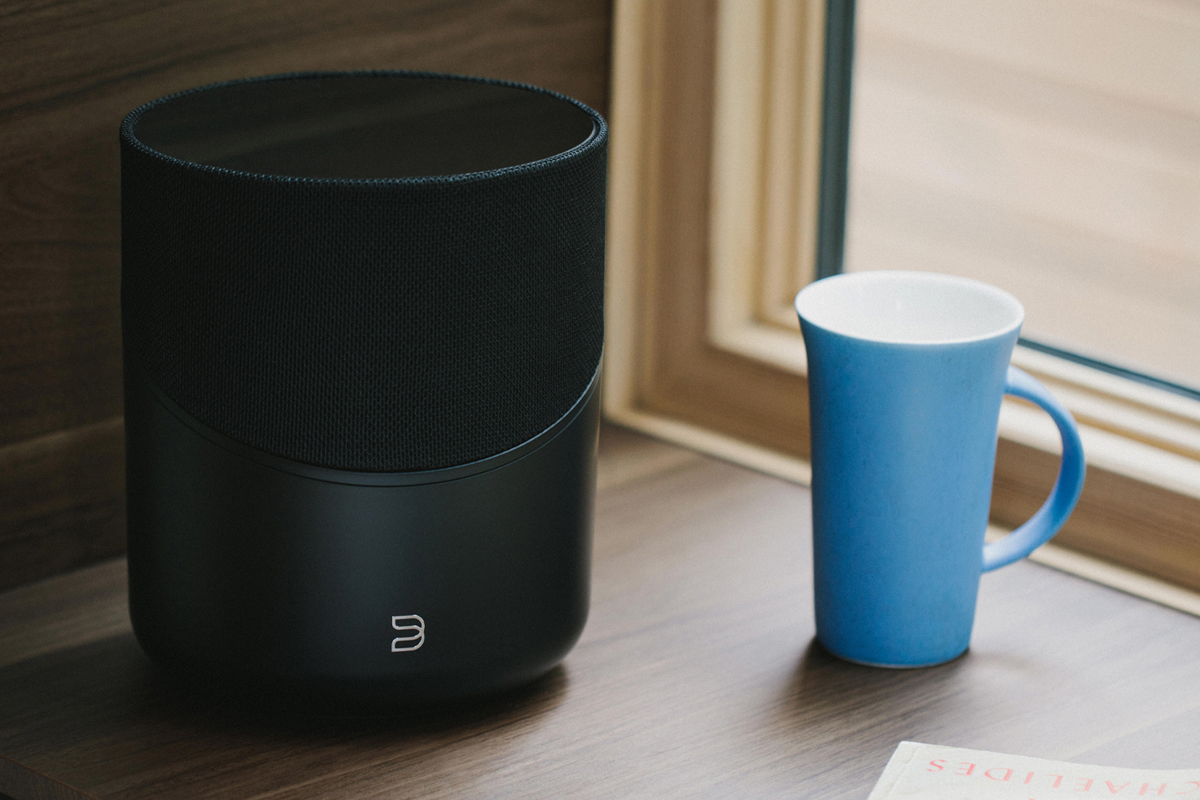
Can a lifestyle music system like the Bluesound Pulse M replace a full-blown two-channel setup? Of course not. At home, my first choice for a musical fix will always be the KEF LS60 Wireless system in my living room. My second choice will always be the PSB Alpha iQ system in my home office. But I sure wouldn’t mind adding a couple of Pulse M speakers for the other rooms in my home—no matter what the purists say.
. . . Gordon Brockhouse
Associated Equipment
- Active loudspeaker system: PSB Alpha iQ.
- Sources and control devices: Apple iPhone 14, Google Pixel 4a 5G, HP Spectre x360 convertible notebook PC, Apple MacBook Pro (2023, M3), Apple Mac Mini (2020, A1).
- Network: Google Wifi four-node mesh network.
Bluesound Pulse M Streaming Tabletop Music System
Price: $399.
Warranty: One year, parts and labor.
Bluesound International
Lenbrook Industries Ltd.
633 Granite Court
Pickering, Ontario L1W 3K1
Canada
Phone: 1-855-531-4666
E-mail:
Website: www.bluesound.com





